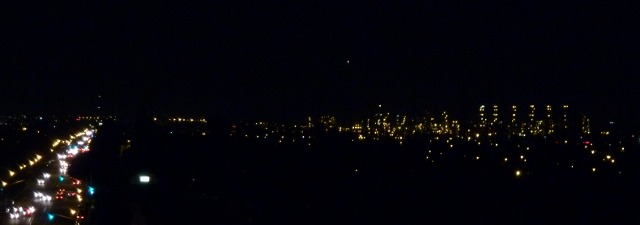
Years ago, when I’d drive along the 405 freeway late at night, I’d catch glimpses in the distance of what looked like a cluster of tall buildings in a city center. Not knowing the area well, I’d wonder whether I was seeing glimpses of Long Beach, or some other city in the area that I didn’t know. And then the freeway would curve, and I’d never quite figure out where those buildings were, and I’d mean to look it up on a map, but by the time I got home I’d be so tired I’d go straight to bed, and I’d forget all about it in the morning.
It always made me think of the kind of fantasy story inspired by mirages, where someone sees something from a distance, but when they get close it turns out not to be there, or to be far less grand than expected.
Somewhere along the line I realized that those lights I was seeing in the distance weren’t a city far off from the freeway. They were the lights on the oil refinery right next to the freeway a few miles down in Carson. I’d just catch glimpses of it between trees and closer buildings. With no reference points and no sense of scale, it wasn’t clear that I was looking at a compact cluster of small towers, not a larger cluster of taller buildings. By the time I got close enough to see the actual refinery towers, they looked different enough that my sleepy and driving-focused brain didn’t make the connection to those distant lights.
The South Bay is dotted with oil refineries, built here in the days when it was a major oil producing region, and I assume kept here because it’s so close to the Port of Los Angeles. [Edit: Actually, the area still produces quite a bit of oil, but the remaining wells are much better hidden.] Every once in a while I’ll be driving or walking over a hill and catch a glimpse of a too-regular “skyline” where all the lights are yellow, and I’ll think back to the time when I wondered about a vanishing city.
Photo: Exxon/Mobil Torrance Refinery, seen from a hill up on 190th St.

